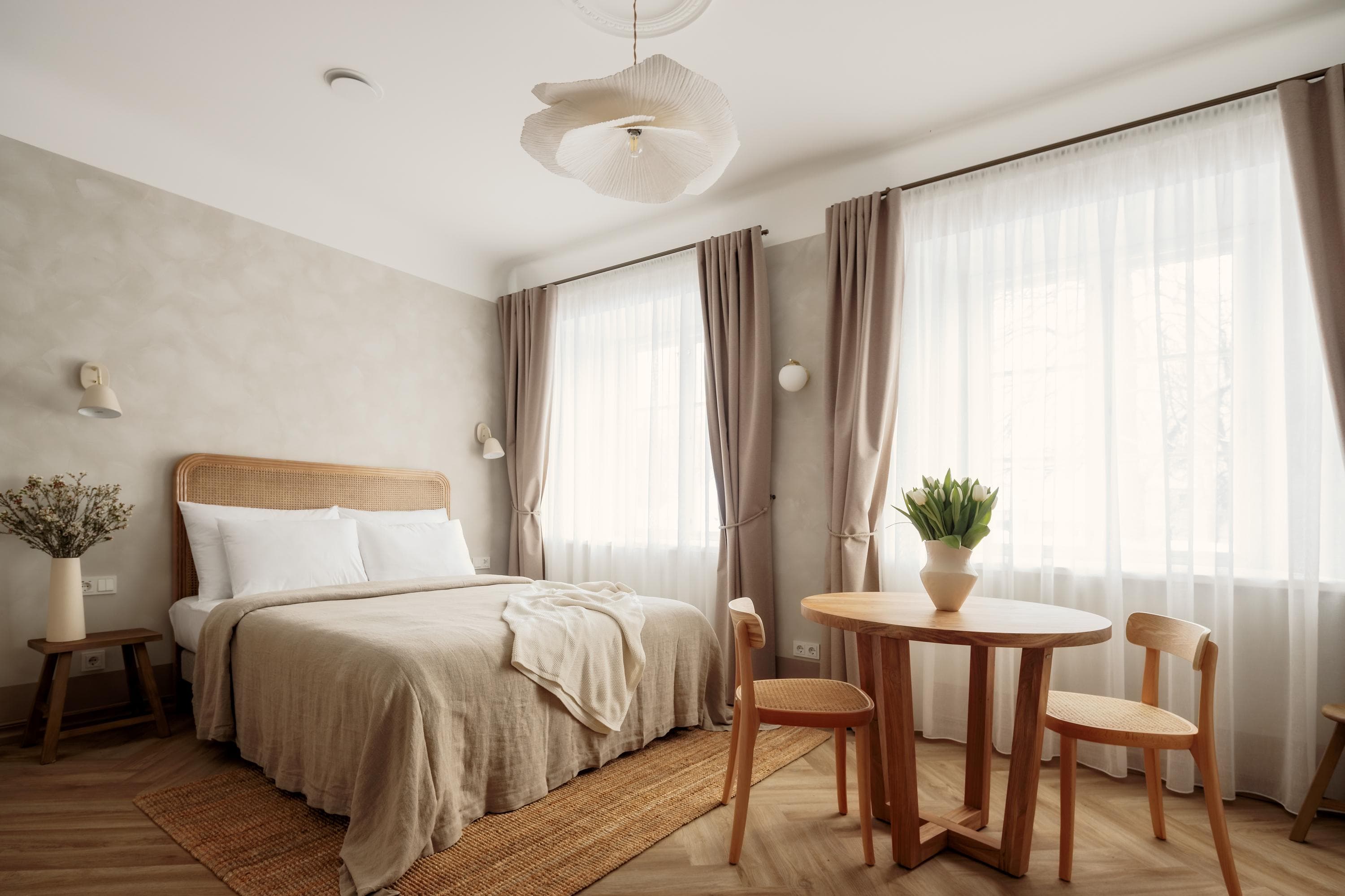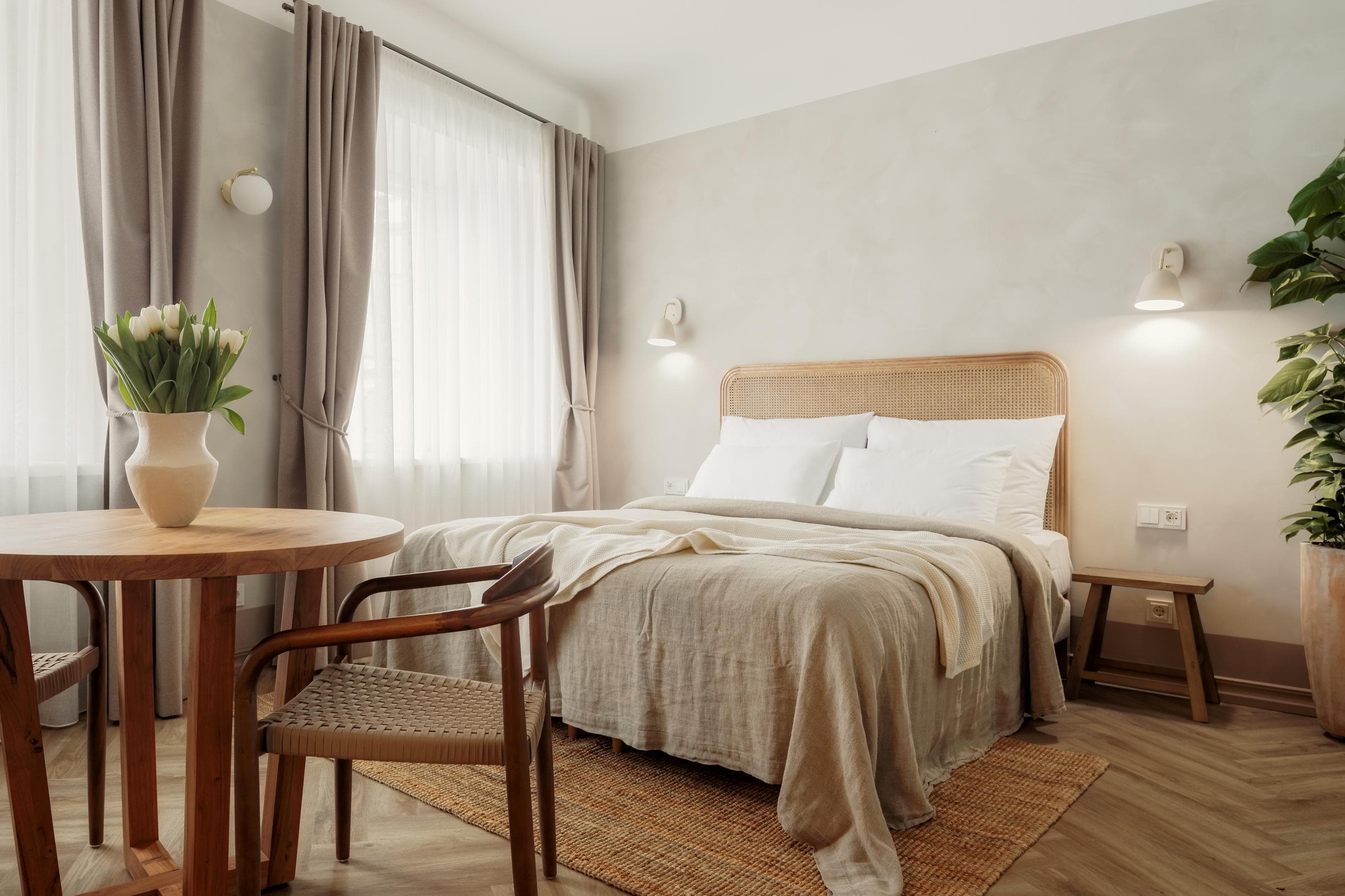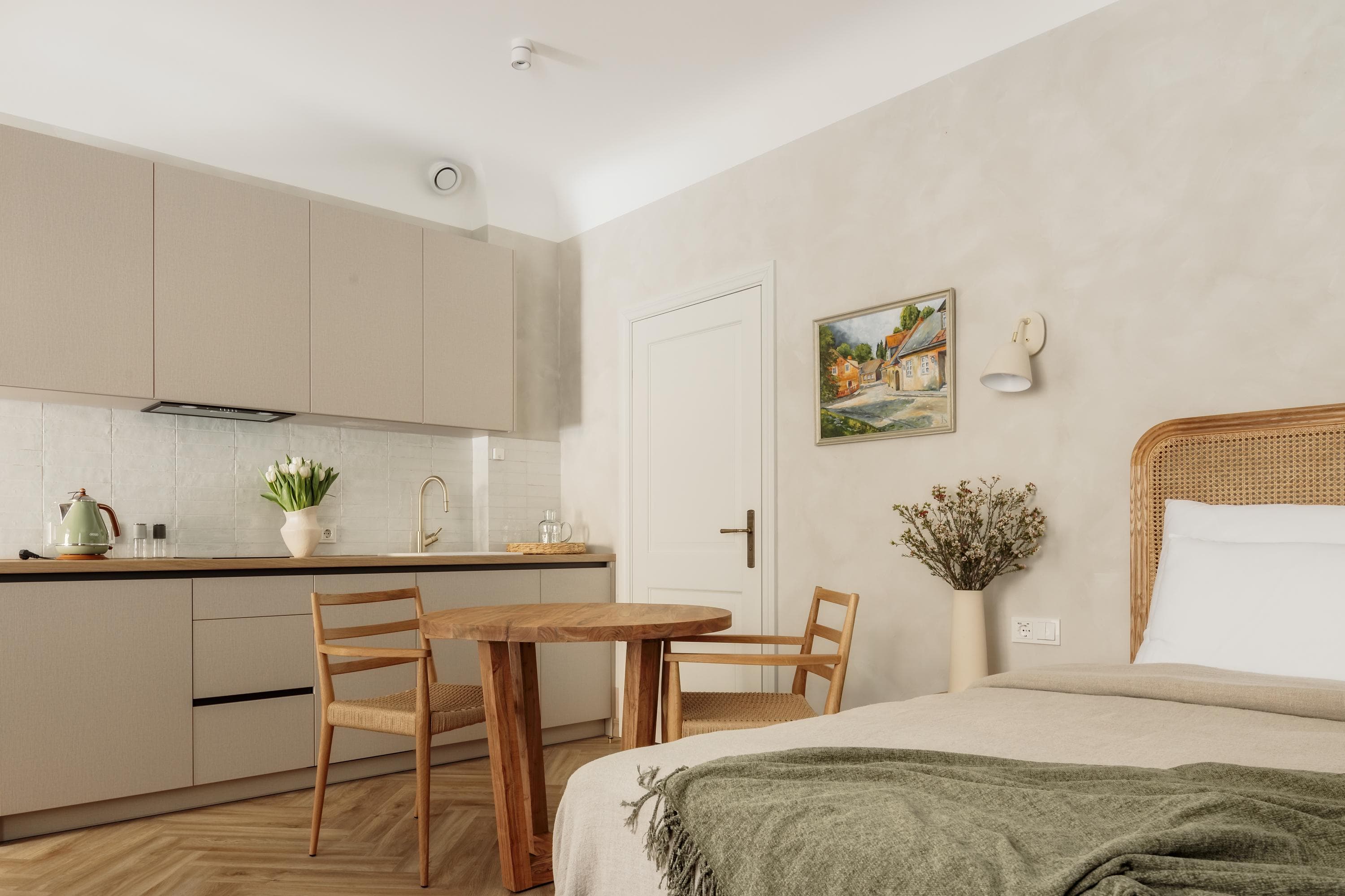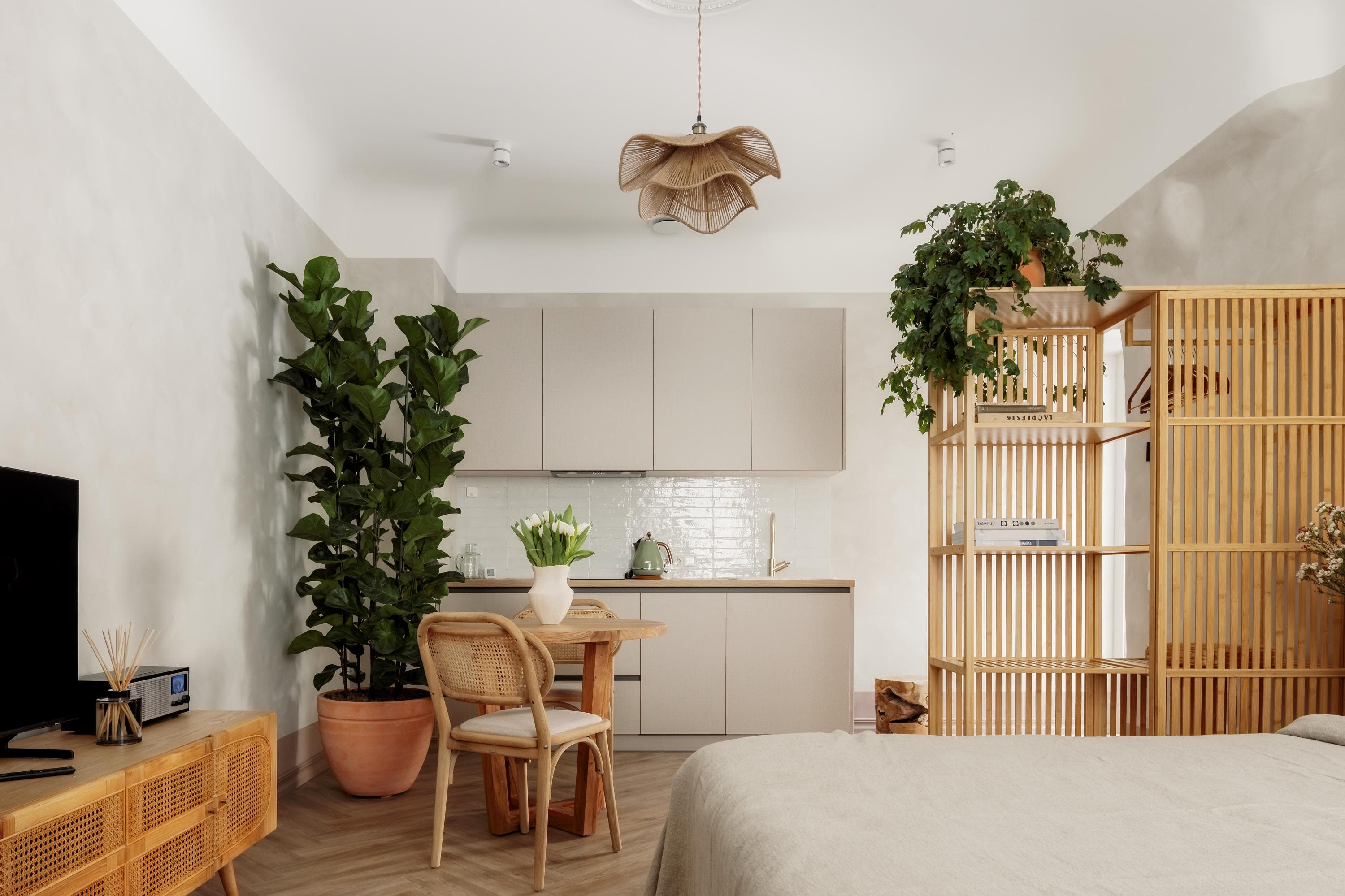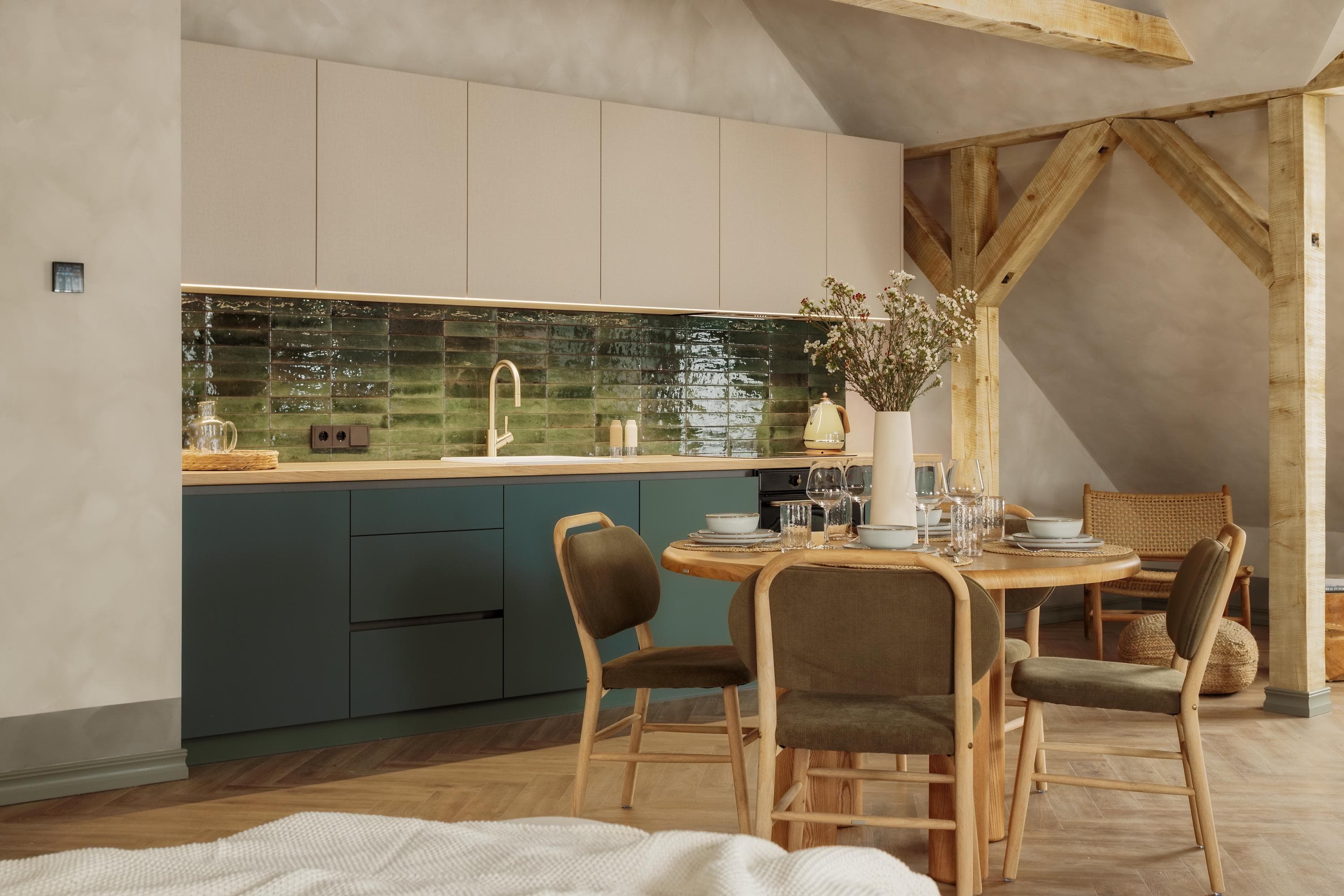Spīdala first, Konrāds after
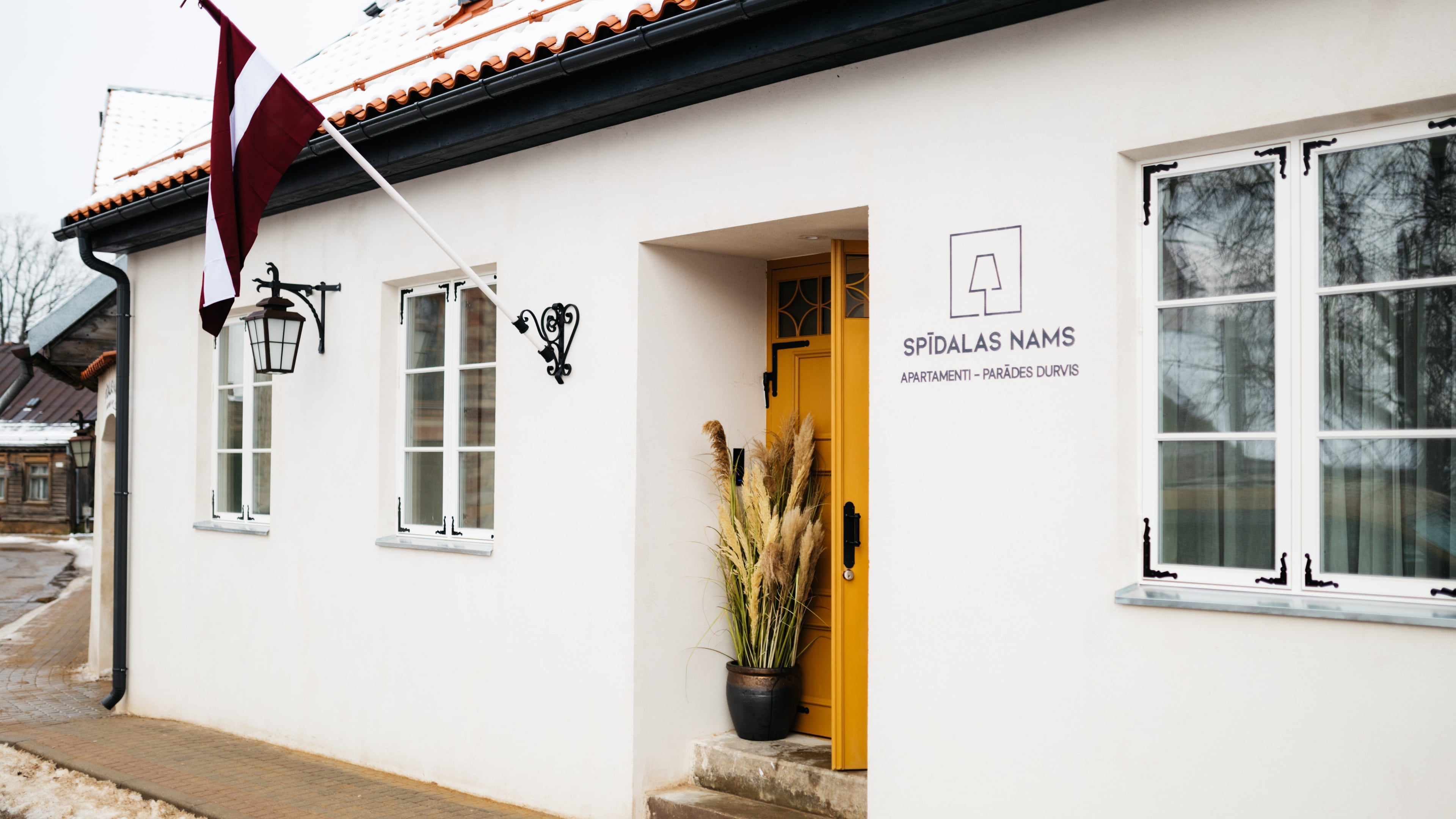
Almost 800 thousand euros have been invested in the creation of “Spīdalas nams”. In parallel with this project, more ambitious plans are being pursued – “Konrāda kvartāls”, which will have both short-term and long-term rental apartments, as well as spaces for work and events. In the further future, there is an idea to create an energy-efficient rental housing village in Cīrulīši.
In the original version, the building was called “Katrīnas nams”, because it is located at 12A Lielā Katrīnas Street, but after googling such a combination of words, it was concluded that there is a house named after Catherine everywhere in Latvia. The name is mainly dedicated to the partly Latvian-born ruler, says Palkavnieks. Cēsis Street, on the other hand, is named after St. Catherine.
“Next to our house is the “Pumpura nams” – that’s what we call it, because Andrejs Pumpurs not only lived there, but also wrote “Lāčplēsis” – that’s the legend. And it’s not Laimdota who is a symbol of the spirit of the Latvian people, but Spīdala. A woman who may not have done everything right, but she is the conscience of Latvia with her mistakes and not always the right path. She symbolizes a strong, independent woman, without whom Lāčplēsis’s fight would not have been successful,” Palkavnieks explains the choice of the name.
“Spīdalas nams” has six apartments – four smaller ones on the first floor and two larger ones on the second. Since guests will not have access to breakfast as is customary in hotels, a mini kiosk has been set up in one of the niches where they can purchase local goods; while the guest rooms have a full kitchen.

“It is interesting that “Spīdalas nams” project started after the “Konrāda kvartāls” project, but was completed well before that,” he states, revealing that the “Draugiem Group” had purchased this property with an already prepared project, but it was intended to create larger apartments. The architect has been asked to review the solution.
“The house was in a very sad state, unfortunately, as happens in many objects, someone had tried to dismantle everything that was valuable,” reveals Bajārs. Basically, only four walls, the entrance door and two historical windows remained from the historical building. Everything that could be preserved has been restored. “We had to try to preserve the aura of the old town of Cēsis as honestly as possible, while not doing anything fake. No decorations or stoves had survived, we didn’t put it all back together, we just lied,” describes the architect’s approach to the project. Accordingly, for example, other windows have been made by analogy with the historical window.
There was an outbuilding in the yard, both before and now. The previous one was in a sad state, rotten, says Bajārs. It has been rebuilt. “If we intervene, then in a modern way. The outbuilding is bright, glazed, and there is a nice corner to sit,” he describes.
However, the biggest challenge was related to the construction of the roof; there used to be only one. “No matter how we planned, the apartments ended up dark. We bravely went to the monument guards, offered to keep one authentic one, but replicate the same one. As a result, there are two roof constructions. So there was one, now it is symmetrical on both sides, and an uninitiated person will not notice it. There is no damage, it is completely identical to the historical one. As a result, the rooms have become pleasantly bright.”
There are four buildings in the block, construction and restoration work is already underway in the first two - the “Mācītāja māja” and the “Ratu māja”. “On the other hand, the “Konrāda nams” is unfortunately another case where someone "torn apart" without a project. Basically, two staircases have survived, in places - decorative wall paintings. If there is a little bit of something left, we hold on to it, we don't let go,” says Bajārs. This is an opportunity to bring back life to several historical buildings. They are unique, the architect emphasizes.
““Mācītāja māja”, for example, was the Cēsis secondary school – a complex log building rebuilt in different periods. We realized that our knowledge was too “short”, so we attracted a specialist in wooden architecture, Pēteris Blūms, who is working on this project,” he describes one of the buildings to be renovated.
“Ratu māja” is the oldest building in this block and will be converted into a very small, unique apartment, with its own secret basement, which may have survived even from the 14th century.
Meanwhile, the “Konrāda nams”, after which the entire block is now named, will, after renovation, make a significant contribution to the revitalization of “Rose Square” itself. The building has been empty for more than thirty years.
The peculiarity is that on one side the house is three-storey, on the other – two-storey. During the Latvian era, the owner at the time had grandiose plans to rebuild the building, but the bank loan was only enough for half the house, the architect knows how to tell. “In recent times, there was an idea to “raise” the entire building so that it would have three floors, it seemed to me that in this way it would lose its identity – the classicist facade. We persuaded “Draugiem Group” to lose five square meters, but return to the attic solution,” he describes the plan, indicating that this will be the biggest change that people will notice.
People might expect a different reaction from people regarding the only new building in the block. “The biggest challenge is not to deceive or lie – since the historical building on the plot has not been preserved, a completely new, modern building will replace it, but we are trying to take what is characteristic of Cēsis – the scale of the building, the shapes of the roofs, but most importantly – the materiality. Sandstone is everywhere in Cēsis. We won’t really use it, but – slow-cast concrete prepared using a special method, which creates the same texture as sandstone and has similar tones. It will definitely be a subject of discussion, because modern architecture does not dominate in Cēsis. And this building will be in the very heart of the city,” explains Bajārs.
“Konrāda kvartāls” will have both short-term rental apartments and long-term rental housing. For longer-term living, apartments will be offered directly in “Konrāda nams”, which also has a café/restaurant on the first floor. The new building will have spaces that could be dedicated to both office needs and events, or they will be universal, quickly transformable, Palkavnieks outlines the concept.
The courtyard and the terrace created within it will be publicly accessible, including ensuring accessibility to the environment for everyone. It is located right next to the castle fence and from its viewing platform you will be able to see the castle courtyard.

In terms of tourism, Cēsis is like a roller coaster – very good in the summer, also good in the white, snowy winter, the city is also full when there are events, while in the dark autumn and spring it is more like a valley of sorrow. “That is why 10 years ago the municipality made a decision to develop the Space Knowledge Center in Cīrulīši precisely with the aim of “filling” the empty autumn and spring. In Latvia, there is really no offer specifically for families outside the active season,” says Rozenbergs.
Therefore, the new municipal tourism agency now faces the task of combining various products and services for families, so that they know that one day they will do this, the next day they will do another, stay overnight and the industry will be active even in the off-season. “There are various and diverse offers in Cēsis region, which now need to be put together.”
Another direction is to develop business tourism more, for example, the concert hall has the opportunity to hold conferences. When concerts are held there, especially when people who are beloved by the people, such as Raimonds Pauls, perform, everything is full and visitors have nowhere to stay overnight.
Therefore, the municipality commends “Draugiem Group” for its investments in improving the urban environment and expanding the housing stock, making the city more attractive to residents and guests.
Published19/02/2024






